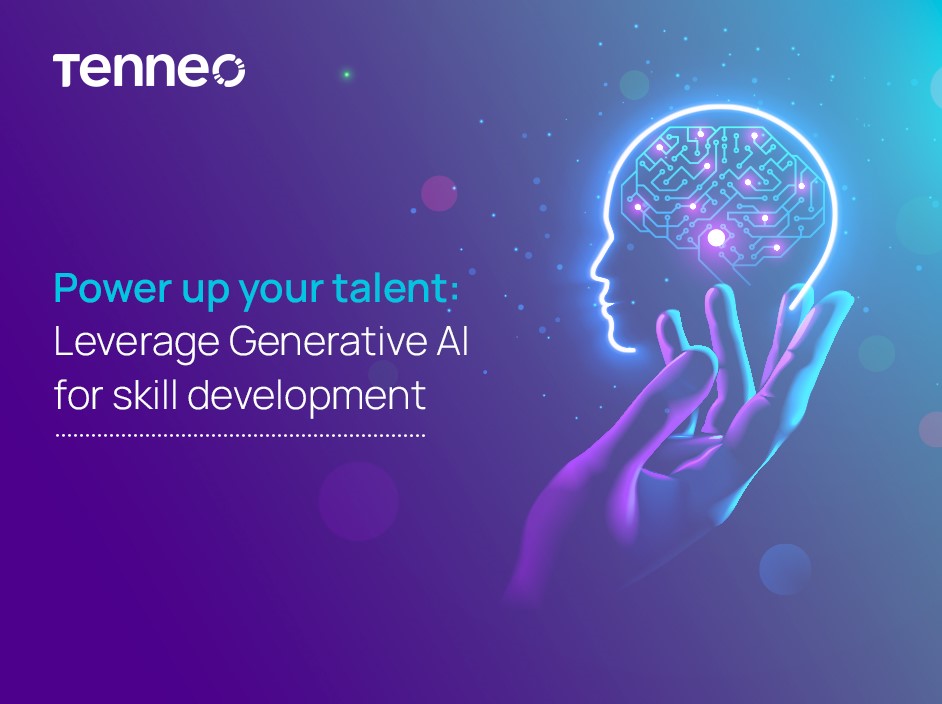
Accelerating Employee Skill Development with Generative AI: A Guide for L&D Professionals
July 31, 2023
Measuring Learning Impact: A Game-Changer for Training Success
September 18, 2023
Accelerating Employee Skill Development with Generative AI: A Guide for L&D Professionals
July 31, 2023
Measuring Learning Impact: A Game-Changer for Training Success
September 18, 2023The Onboarding Puzzle: Challenges that HR Leaders Face

In the fast-paced and dynamic realm of HR, effective onboarding has become the cornerstone of building a successful and engaged workforce. HR leaders play a pivotal role in orchestrating these critical processes, shaping the trajectory of new hires and existing employees within the organization. 77% of HR professionals strongly believe that onboarding will become more important. However, navigating the onboarding puzzle presents a myriad of unique challenges that demand innovative solutions.
- High Attrition Rate
Challenge: The continuous departure of new hires shortly after their onboarding can lead to significant disruptions and instability within teams, affecting overall productivity and morale. It becomes increasingly challenging to retain talent, resulting in a constant need to recruit and train new employees, which incurs additional costs and diverts resources away from core business activities.
Impact: Financially, the cost of recruiting and onboarding new hires constantly can hamper innovation and limit opportunities for business expansion. Additionally, a high turnover rate tarnishes the employer branding, making it challenging to attract top talent and potentially hindering future growth prospects.
- Prolonged Time to Proficiency
Challenge: Time to proficiency, the duration it takes for new employees to become fully productive in their roles. During the first month, new hire productivity is just 25%. Factors contributing to this challenge may include an inadequate onboarding process, limited access to training resources, and unclear performance expectations. The extended time required for employees to reach full productivity can strain team resources, impact morale, and delay the organization's ability to achieve its objectives.
Impact: For employees, the slow integration into their roles can lead to frustration, decreased job satisfaction, and reduced confidence in their abilities. As a consequence, they may struggle to contribute effectively, affecting their overall performance and growth within the company. On an organizational level, a prolonged learning curve can strain team dynamics and productivity, impeding the achievement of targets and potentially affecting the company's competitiveness in the market.
- New Hire Engagement
Challenge: Engaging new employees from the start is essential to build a sense of commitment, connection, and enthusiasm towards their roles and the organization. Creating a positive and engaging onboarding experience that aligns with the company's culture and values is essential to foster long-term employee loyalty and satisfaction.
Impact: Low engagement during onboarding can lead to disengaged employees who may struggle to integrate into the company culture and align with the business goals. This lack of engagement hinders their ability to perform at their best and may result in early attrition. Furthermore, disengaged new hires may not fully grasp their roles and responsibilities, leading to suboptimal performance and a negative impact on team dynamics.
- Remote Onboarding
Challenge: The absence of face-to-face interactions can make it challenging to build personal connections and establish a strong company culture for new remote employees. The lack of proper remote onboarding can lead to isolation, disengagement, and difficulty in understanding organizational norms and expectations.
Impact: A poorly managed remote onboarding experience can hinder the new hires’ ability to fully comprehend their job responsibilities and the company's values, leading to reduced productivity and a higher likelihood of turnover. It may discourage potential candidates from performing to their true potential and hinder the organization's ability to retain top-notch talent.
- Personalization for Diverse Workforces
Challenge: A diverse workforce comprises individuals with different backgrounds, experiences, skill sets, and learning styles. A one-size-fits-all onboarding approach may not effectively resonate with every employee. Striking the right balance between standardization to ensure consistency and personalization to cater to individual needs requires thoughtful planning and execution.
Impact: A generic onboarding approach may not effectively address specific learning needs, slowing down the time it takes for employees to reach their full potential. When new hires experience personalized onboarding, they are more likely to feel valued, included, and appreciated by the organization. Conversely, lack of personalization may lead to disengagement and a negative perception of the company culture, increasing the risk of turnover and reduced productivity.
- LMS Integration with HRMS
Challenge: The complexity of integrating LMS with HRMS arises from the need to synchronize data between the two systems effectively. This includes ensuring that employee information, such as job roles, departments, and training history, is up-to-date and accurately reflected in both systems. Additionally, managing user access and permissions across integrated platforms requires careful attention to data security and privacy concerns.
Impact: A well-integrated system enables HR professionals to track employees' progress, performance, and skill development seamlessly. On the other hand, a fragmented or inefficient integration can lead to data discrepancies, making it challenging for HR professionals to make informed decisions about learning and development strategies.
Conclusion
In the complex landscape of HR, effective onboarding and employee development are paramount to building a thriving and engaged workforce. HR leaders face multifaceted challenges in orchestrating these processes. Understanding the significance of these challenges and their impact on employee productivity, performance, and business growth is key to crafting successful strategies.
HR leaders can leverage a robust and intuitive LMS like Tenneo to streamline their onboarding process and ensure workforce belonging and productivity from day one.
